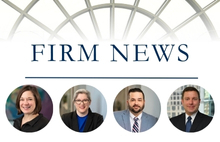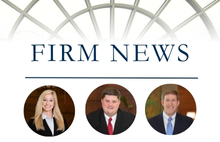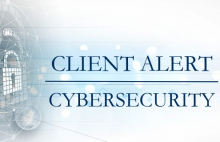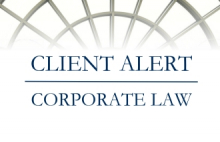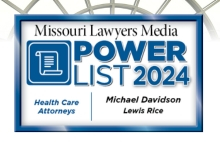SBA Issues New PPP Rule on Owner-Employee Compensation and Nonpayroll Costs
August 25, 2020On August 24, 2020, the Small Business Administration (SBA) issued an Interim Final Rule on the Treatment of Owners and Forgiveness of Certain Nonpayroll Costs. This interim final rule provides for a de minimis exception to the owner-employee compensation rule under the Paycheck Protection Program (the “PPP”) and introduces new limitations on the eligibility of certain nonpayroll costs for loan forgiveness that all borrowers and lenders need to know. For all of our prior alerts on the PPP, click here.
5% Ownership Threshold for the Owner-Employee Compensation Rule
As detailed in our prior alerts here, here, and here, the existing interim final rules relating to PPP loan forgiveness cap provide guidance as to the amount of loan forgiveness for payroll compensation attributable to an owner-employee, which includes C-corporation shareholders, S-corporation shareholders, partners in a partnership, and members in a limited liability company. The new interim final rule summarized in this alert introduces a 5% minimum ownership percentage in a C-corporation or S-corporation that an owner-employee must surpass to be subject to the owner-employee compensation rule. Notably, the new interim final rule’s 5% minimum ownership percentage does not apply to ownership interests in a partnership or limited liability company.
Nonpayroll Costs Attributable to Tenants or Sub-tenants are Ineligible for Forgiveness
Under the new interim final rule, “the amount of loan forgiveness requested for nonpayroll costs may not include any amount attributable to the business operation of a tenant or sub-tenant of the PPP borrower or, for home-based businesses, household expenses.” The new interim final rule provides several examples to illustrate the application of these limitations and how to determine eligible nonpayroll costs under leases with “related parties.” Note that these limitations apply regardless of whether the sub-tenant or lessee is actually paying rent or lease payments to the borrower.
(1) Limitations Relating to Real Estate (and Perhaps Personal Property) Leased from a Related Party
The new interim final rule defines “related party” as “any ownership in common between the business and the property owner.” By way of illustration, it appears that this would mean that the following are related parties:
- a landlord and a tenant that are each owned in whole or in part by another entity or individual; and
- an individual owner of real estate that leases the property to a business in which that individual owner has an interest (note the interim final rule does not specify whether this interest has to be above a certain threshold or a controlling interest).
If a borrower leases real estate from a “related party,” then so long as the lease and the mortgage were entered into before February 15, 2020, the amount of loan forgiveness requested for rent or lease payments to the “related party” is limited to “the amount of mortgage interest owed on the property [to a person or entity other than a “related party”] during the Covered Period that is attributable to the space being rented by the business.” If either the lease or mortgage was not entered into before February 15, 2020, or the mortgage holder is a “related party,” then no portion of the rent paid by the borrower under the lease is forgivable. It’s not clear whether the preceding limitation also applies to leases of personal property; the example in the interim final rule only refers to “leases,” “mortgages,” “property,” and “rent or lease payments.” Accordingly, Borrowers should consider whether it is appropriate to seek forgiveness on payments made under leases of personal property entered into with a “related party.”
(2) Limitations Relating to Real Estate Leased from an Unrelated Party
If a borrower leases real estate from an unrelated party, then:
- the borrower can seek forgiveness for the amount of rent that it pays to its landlord less the rent payable by the borrower’s sub-tenant(s) to the borrower; and
- if the borrower shares the leased space with another business, the borrower must determine the amount of rent and utility costs eligible for loan forgiveness “in the same manner as on the borrower’s 2019 tax filings, or if a new business, the borrower’s expected 2020 tax filings.”
The new interim final rule does not provide any guidance concerning how the expected 2020 tax filing amounts should be determined or documented.
(3) Limitations relating to Mortgaged Real Estate Owned by the Borrower and Leased to Another Business
If a borrower leases a portion of its mortgaged real estate to another business, then “[t]he portion of the borrower’s mortgage interest that is eligible for loan forgiveness is limited to the percent share of the fair market value of the space that is not leased out to other businesses.” The new interim final rule provides the following example: “if the leased space represents 25% of the fair market value of the office building, then the borrower may only claim forgiveness of 75% of the mortgage interest.” The new interim final rule does not specify how (nor how recently) fair market value should be determined or documented, nor does it specify how the borrower should determine utility costs eligible for forgiveness.
(4) Limitations on Household Expenses
If a self-employed or sole proprietor PPP borrower works out of his or her home, the borrower cannot request forgiveness for nonpayroll costs in excess of “the share of covered expenses that were deductible on the borrower’s 2019 tax filing, or if a new business, the borrower’s expected 2020 tax filings.” As above, the new interim final rule does not provide any guidance concerning how expected 2020 tax filing amounts should be determined or documented.
Conclusion
The new interim final rule provides helpful guidance for borrowers and lenders that are now focused on applying for and reviewing loan forgiveness applications. Lewis Rice will continue to monitor these developments and provide updates as needed. If you would like to sign-up to receive client alerts via email, you may do so here.
Our attorneys are closely monitoring these developments as they occur and will make regular updates to our COVID-19 Resource Center. If you have any questions about the implications and disruptions of COVID-19 on your business, please reach out to one of the authors above or another member of the Task Force.
